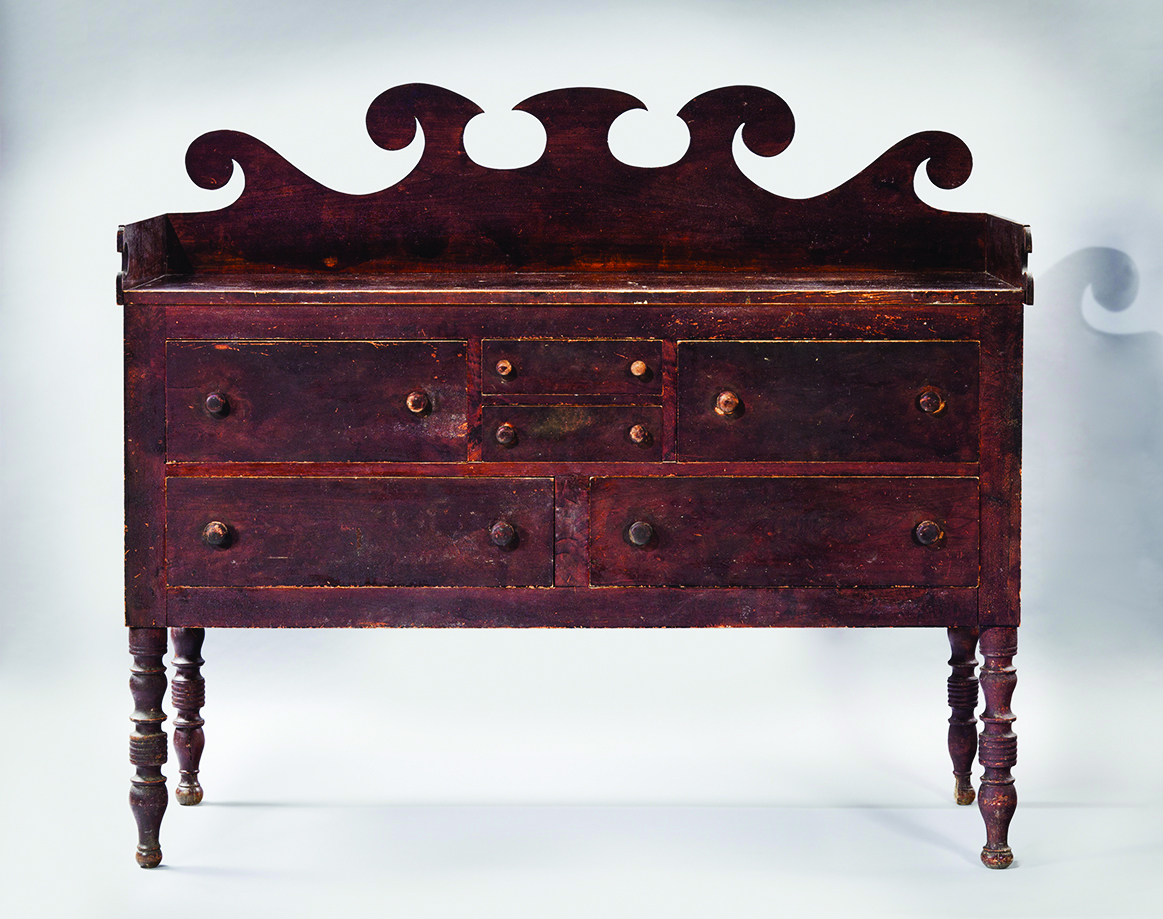

This sideboard is from the collection of the Museum of Early Southern Decorative Arts and may be seen in the exhibition Tennessee Fancy: Decorative Arts of Northeast Tennessee, 1780-1940.
During the first half of the 19th century, artisans who made furniture called themselves “cabinetmakers,” and Northeast Tennessee supported a number of these craftsmen. Ellen Beasley, in her 1971 “The Magazine Antiques” article, “Tennessee Furniture and its Makers,” noted 19 working in Greene County in 1850 records.
The Burgner brothers – John, Christian, and Daniel – made cabinetmaking a family business. The large sideboard shown here was probably made by Christian Burgner and is illustrative of what can be called Burgner style.
Working during the middle years of the century, the Burgners followed the Empire style trends of the day, including bolder features than earlier furniture styles of the Chippendale, Sheraton and Hepplewhite era.
Of particular note is the spectacular scrolled gallery of this sideboard, which has become a recognizable feature of Burgner furniture. Another is their use of mixed and figured woods; this one is made of figured walnut and poplar with an overall paint wash. Curly maple and curly cherry is another combination often seen in Burgner furniture.
The Burgners were originally from Switzerland, settling first in Lancaster County, Pennsylvania, before finally arriving in Northeast Tennessee during the second quarter of the 19th century, where they lived in the Horse Creek section of Greene County.
There were five brothers, but John, Christian and Daniel are the best known today as cabinetmakers. As was common practice for many artisans, they usually referred to their occupation as farming, perhaps pursuing their cabinetmaking business as a sideline.
This is the fifth in a new series of articles on Tennessee arts and antiques by Betsy K. White, director of William King Museum of Art, Abingdon, Virginia. She is the author of two books on the history of the region’s decorative arts and material culture: “Great Road Style: The Decorative Arts Legacy of Southwest Virginia & Northeast Tennessee” and “Backcountry Makers: An Artisan History of Southwest Virginia and Northeast Tennessee.”